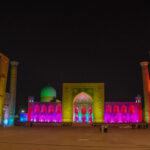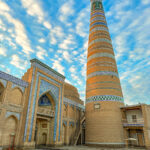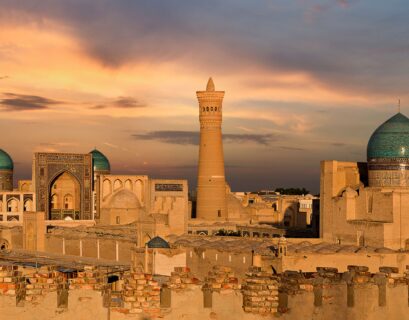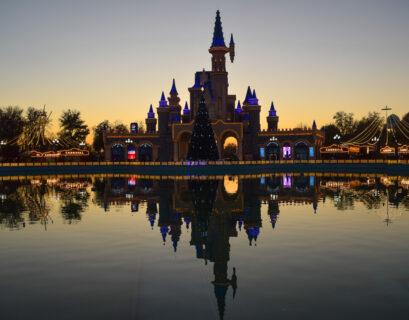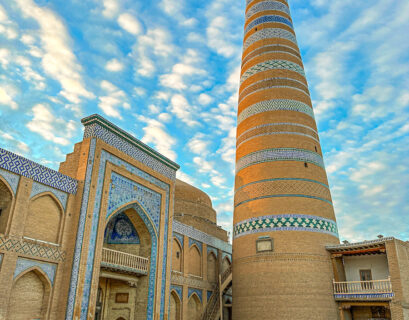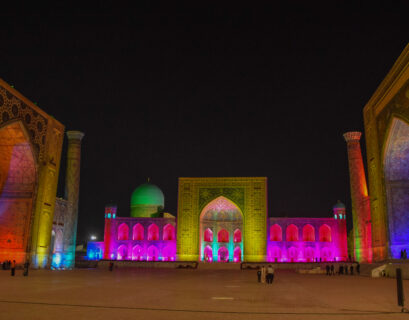The ‘Fairy tale town’ or the ‘Eastern dome of Islam’, Bukhara, Central Asia’s holiest city, is a telling tale of spirituality and liberality. Bukhara is a holy relic with hundreds of historical monuments dotted across its old town. The crumbling remnants of a city wall, a daunting fortress stand as reminders of the bygone era when Bukhara cultivated an enviable culturally and spiritually rich environment. And for a city that has a thriving history of thousands of years, things haven’t changed much. The old town still stands as a citadel of cultural renaissance and offers a glimpse of the pro-Soviet era Turkestan.

This journey was obvious, from Samarkand to Bukhara, another jewel in the Silk Road of Central Asia. A small town packed with a rich dose of culture and history. In a sense, Bukhara reminded more of the era when Emirs ruled the land than Samarkand. Walking between the numerous arches and cupolas of the old city feels like walking back in time. The city breathes an architectural genius, and the old city thrives, the populace being the guardians of the old-world cultural order, and the vibrant markets in the old city alleys are reminders of Bukhara of the Timurid era. And Bukhara has a certain subtlety to it: it isn’t a big open-air museum like Khiva, or as embellished as Samarkand. It’s a city that is very much lived in.

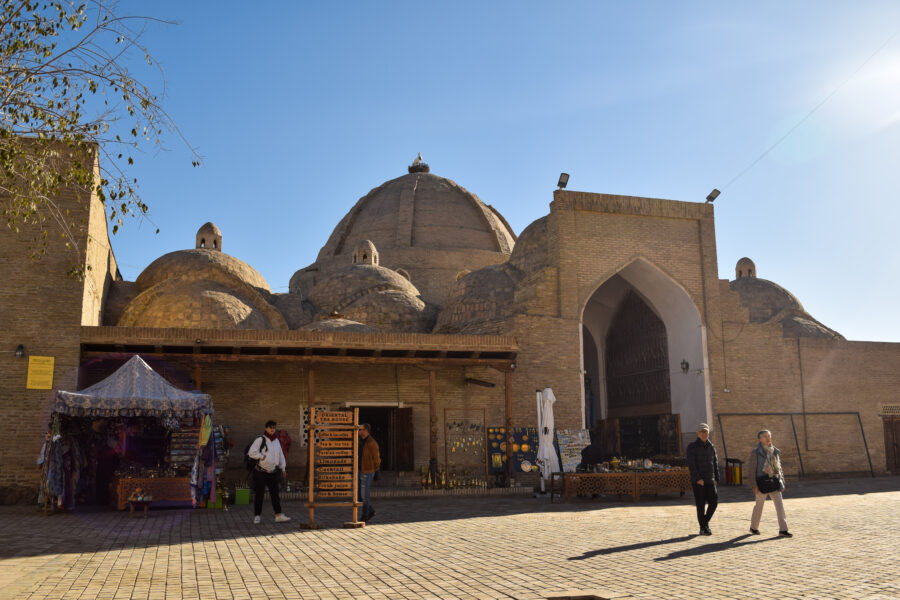
I reached Bukhara in the evening. I took the Uzbek high-speed train Afrosiyab from Samarkand (costing me $12 for this 2.5-hour journey). The main city is quite far from the Railway station. My first impressions of Bukhara were of a clean city with wide tree-lined avenues, and multi-storied and traditional buildings existing side by side. Bukhara has a very different vibe from the cities I have visited in Uzbekistan thus far.
Bukhara’s cityscape in its tapestry, tells a story. The skyline is populated with mosques and minarets, standing tall as relics of the past. On the other side are cranes and Ferris wheels telling a story of the rapid change the city is going through.
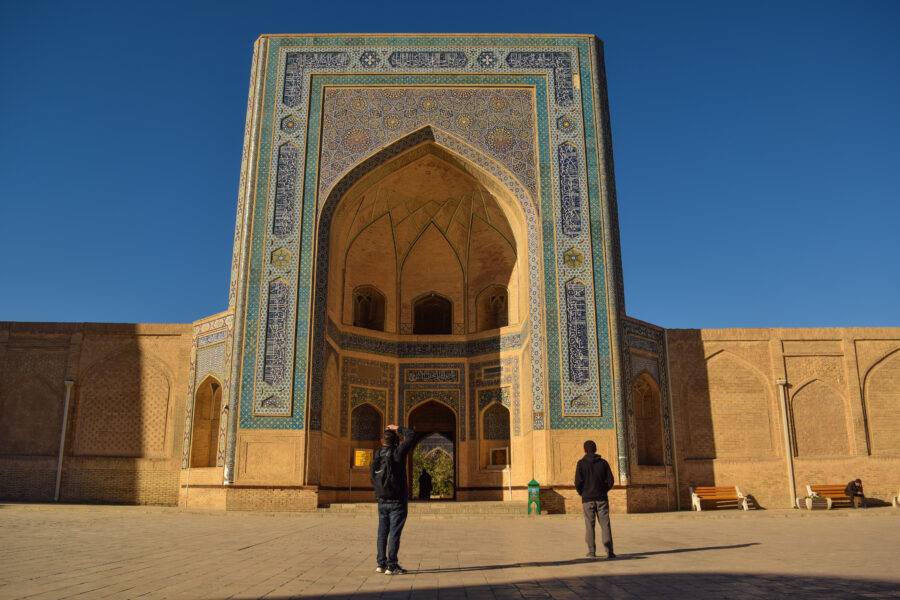
The first sight: The Ark
The history goes that when King Siyavush of the Pishdak dynasty wed Farangis, the daughter of King Afrosiab of Samarkand, he was gifted a vassal kingdom in the Bukhara region by his father-in-law. Siyavush always liked this region because of the many rivers that crisscross it. He established a new city here ‘Bukhara’, and the first thing that he got constructed here was the Ark (Persian for citadel).
This 16th-century Ark continues to be at the heart of Bukhara, both historical and modern. On one end of the Ark, starts the historic old city, and the other takes you to the metropolis Bukhara is evolving into. Over these years the Ark has seen a lot of renovations. The massive entrance gate that you would see was built by Nadir Shah in 1742. A fire destroyed about 80% of the buildings inside the Ark at that time. A massive restoration project was undertaken a couple of decades ago to restore the Ark to its former self. The Registan Square outside the square, was once a site of public executions. Today – it’s just an uneasy reminder of its bloody past.
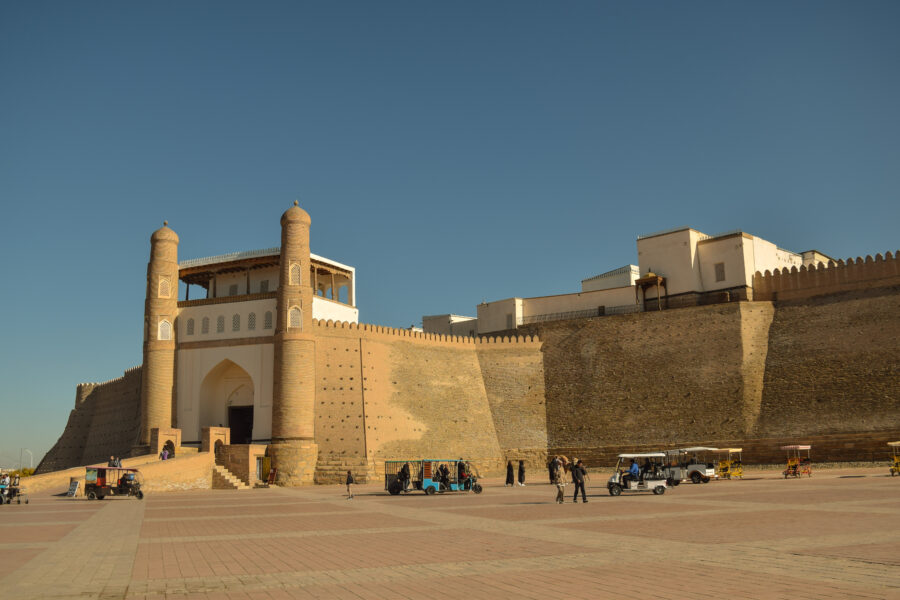
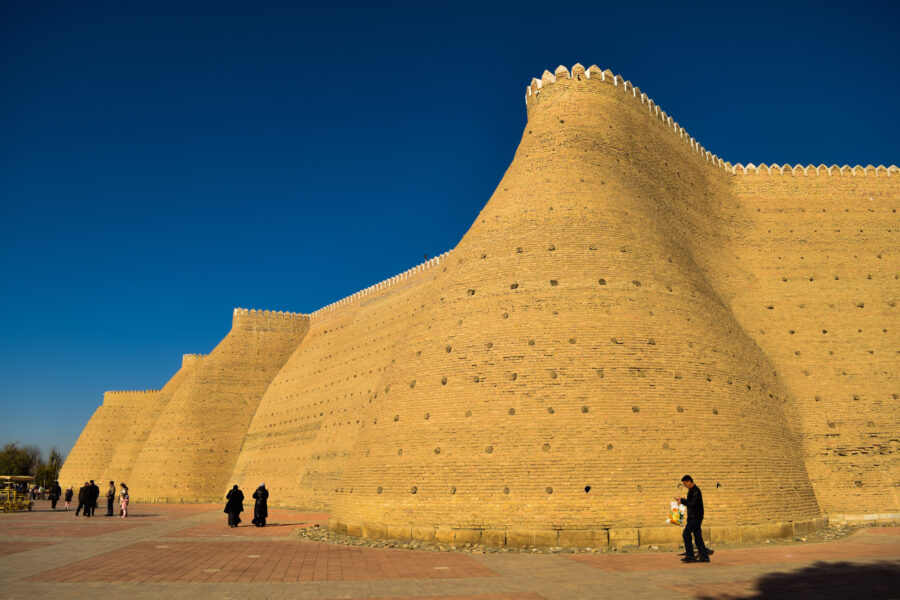
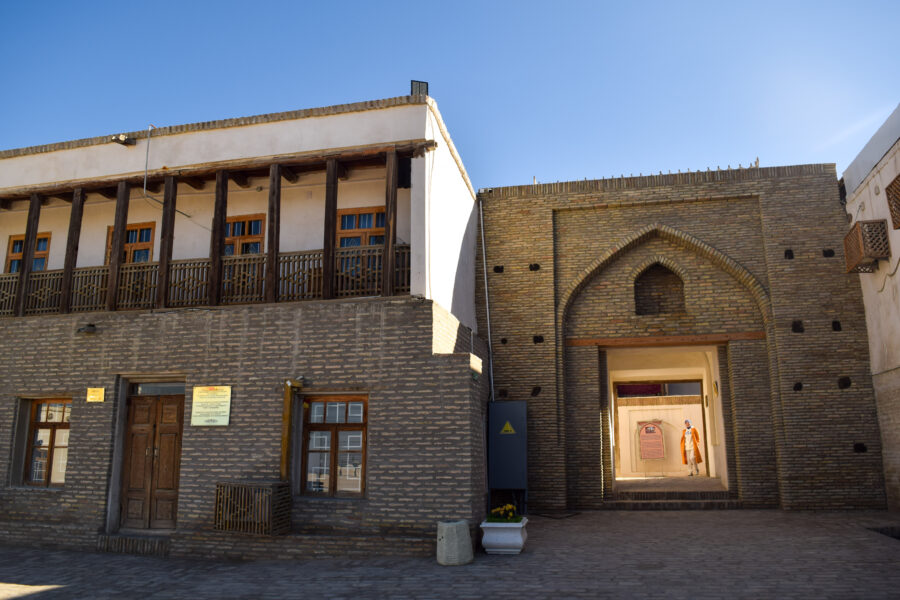
Monumental Bukhara: The old city
A visitor to Bukhara usually begins exploring the city from the Ark. The city of Bukhara is filled with innumerable Madrassas with their beautiful majolica patterns and Chinese blue tiles adorning every arch.
You may start with the Bolo Hauz Mosque, which is just across the street from the Ark. This 300-year-old mosque stands out with its 20 wooden pillars and the tile work both inside and out.
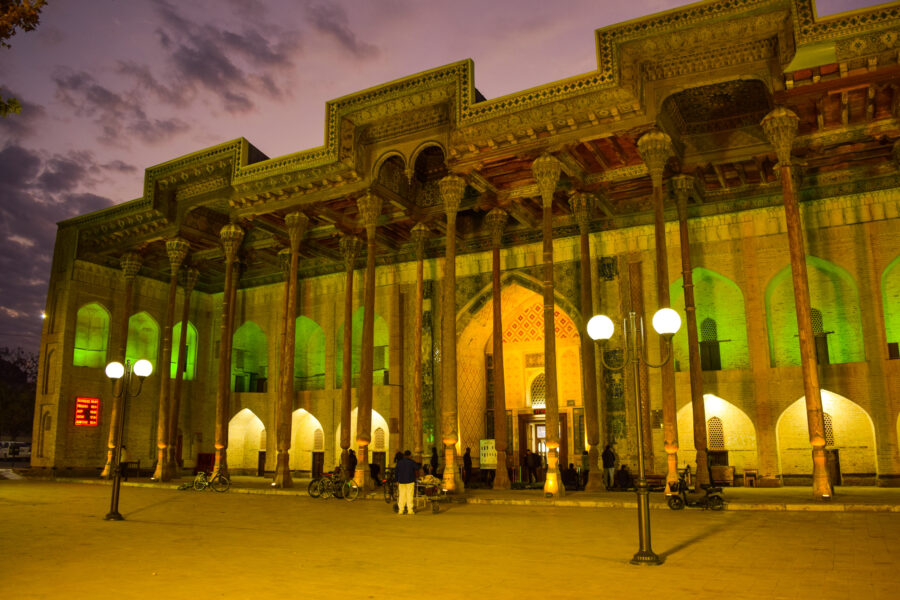
Visit the Po-i-Kalyan or the Kalon Ensemble
The Kalon ensemble is the emblem of Bukhara. The ensemble comprises the Kalyan (or “Kalon”) Minar in the center, and the Kalyan Mosque and the Siddikion Mosque on the two sides. The Minar was built by the Khan of the region to summon the people of the town to the five daily prayers. The Minar stands as majestically today, as it would have then. The ensemble will not fail to bedazzle you with its architectural splendor. You will be blown away by the exquisite artwork on the walls.
The place also has a fair bit of history. The Kalyan Minaret is the only structure in Bukhara to have survived destruction by Genghis Khan. And the Kalyan Mosque was built to rival the Bibi-Khanym Mosque in Samarkand.
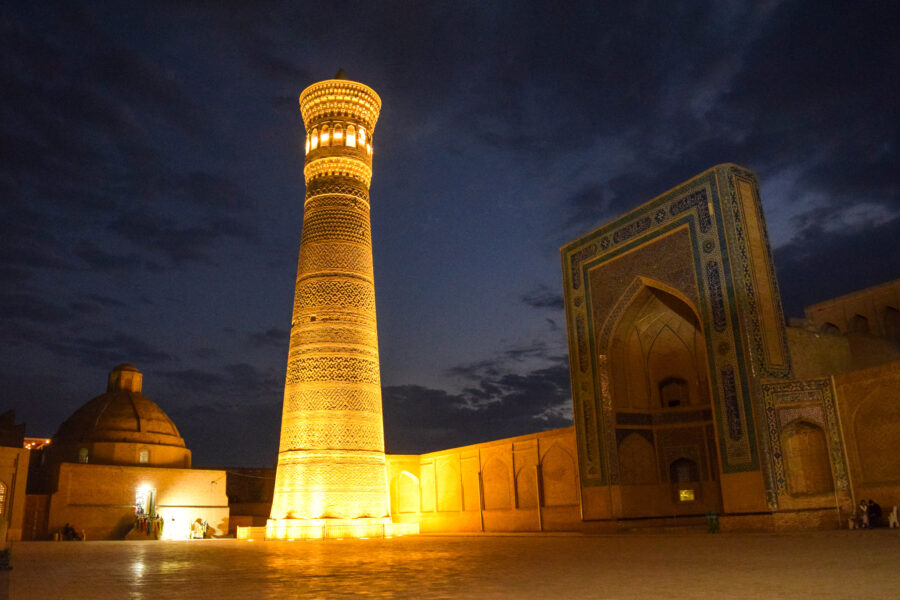
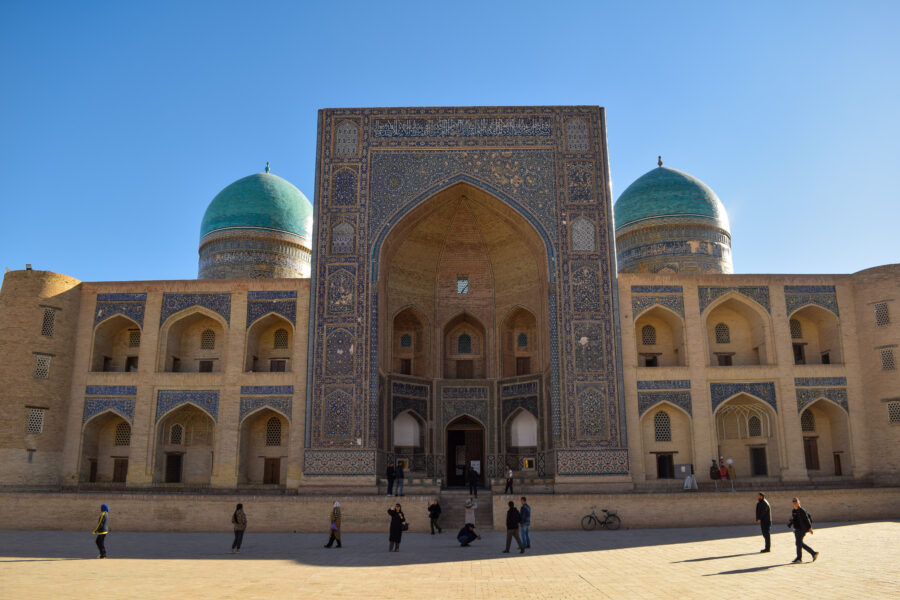
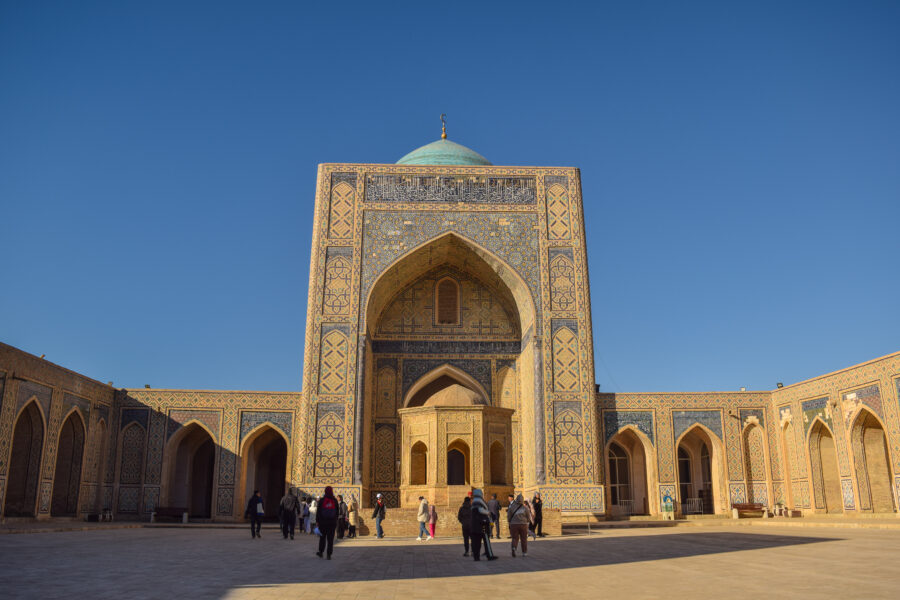
From there, explore the dense network of back streets hides a scattering of madrassas (religious schools), and the old markets. These markets in the old town are wombs of 100s of different crafts including metal chasing, suzani embroidery, miniature painting, and calligraphy. You will find a rich collection of Uzbeki arts and crafts in these markets. From hand-painted plates for £1 apiece, to expensive handmade silk carpets that take months to knot, these markets house them all.
Strewn around these lanes you will find many shops selling technicolour tapestries and priceless antiques. If you have just one option to take back as a souvenir, think of nothing other than suzani embroidery, and meticulous needlework, which is also an important part of an Uzbek bride’s dowry. These lanes are testimony to the thriving craftsmanship in Uzbekistan and establish Bukhara as the cultural and artistic center.
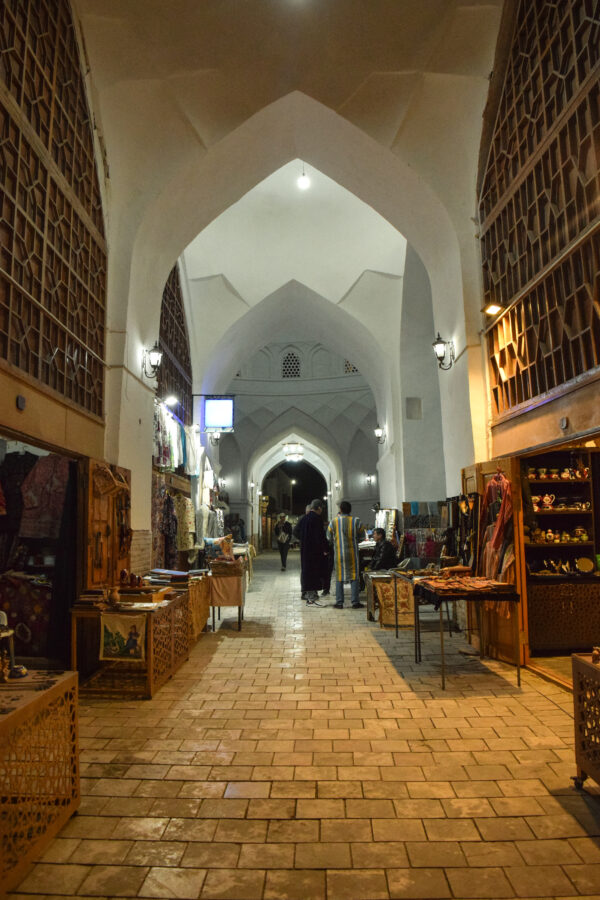
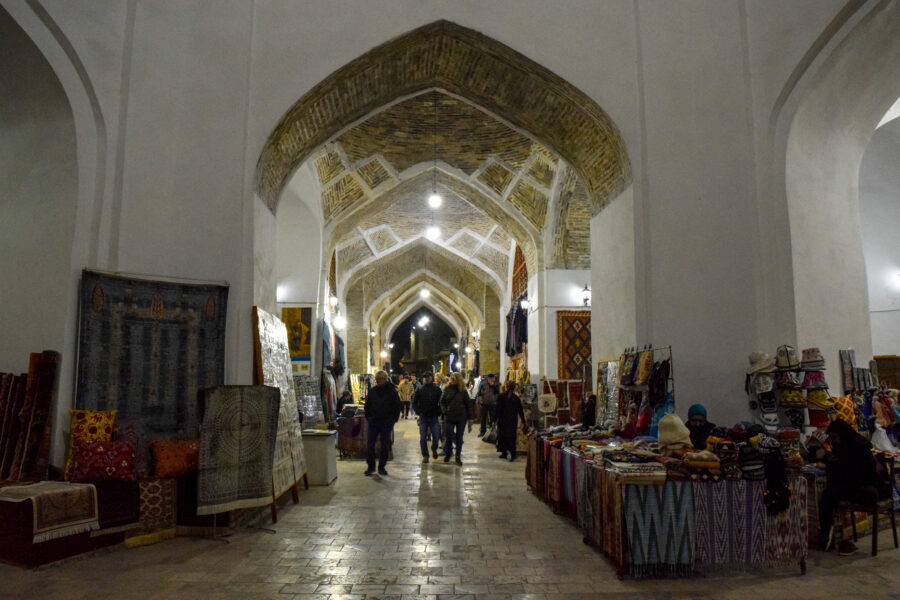
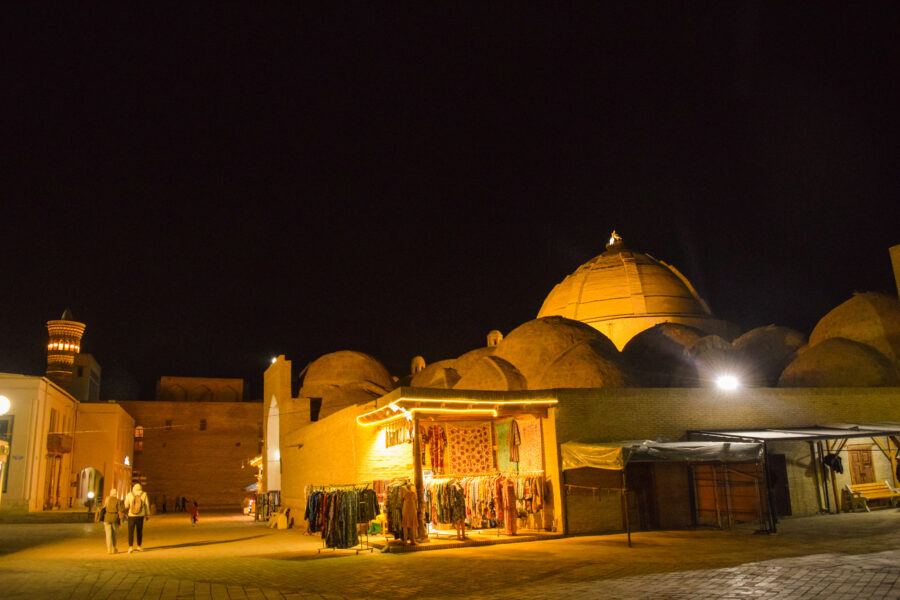
Scattered around the city you will find even more centres of Uzbeki art. One of the most renowned is Davlat Toshev, a seventh-generation miniature painter whose artworks sell internationally for thousands of dollars. There are also plenty of workshops, including just off Lyabi Hauz, where you can watch the artisans at work.
Do make it a point to stroll around the Kalon ensemble at night when the structures are lit up. The intricate decoration of the minaret is a beautiful example of Islamic architecture, and the sight of it at night is worth capturing.
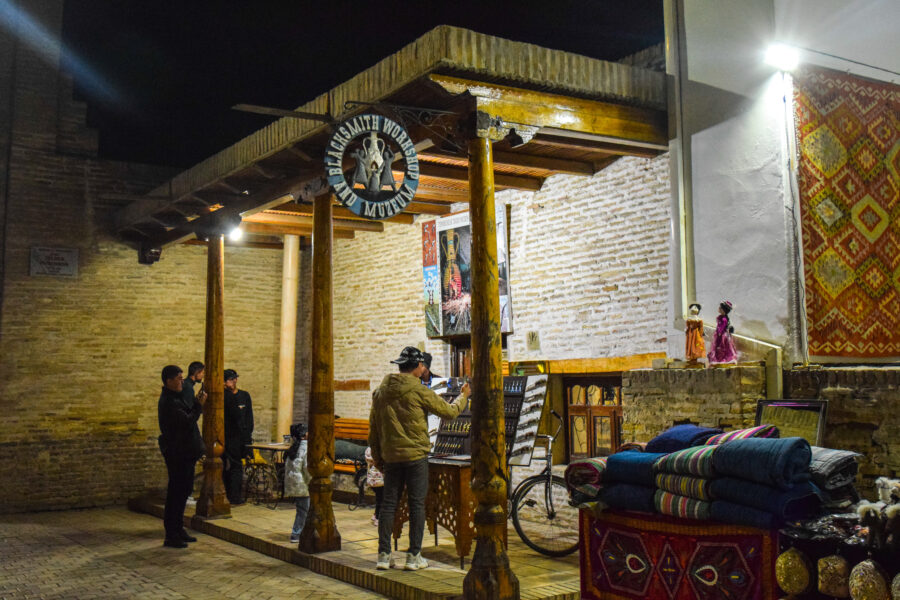
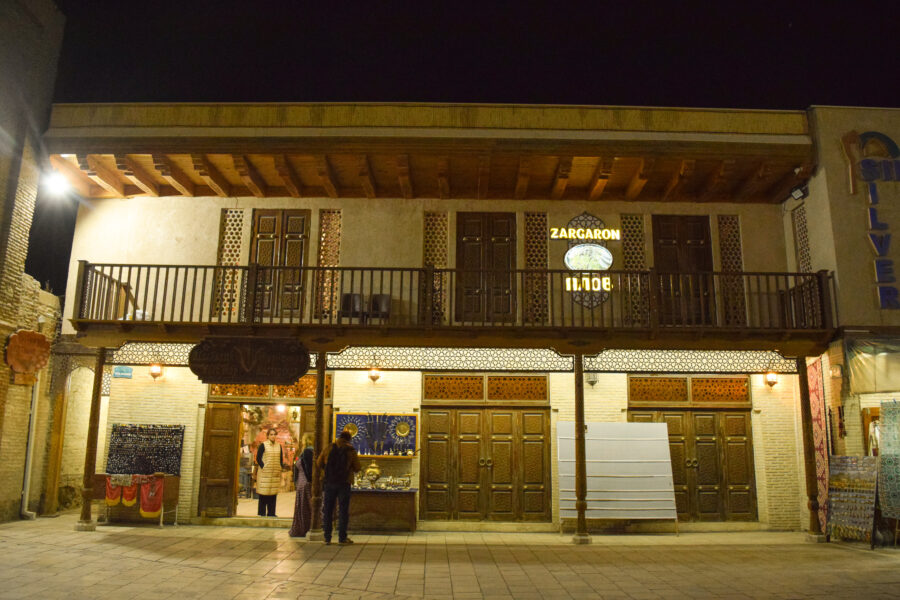

Take a break at the Lyabi Hauz
Lyabi Hauz is undoubtedly the most happening part of Bukhara. At Lyab-i-Hauz, you’ll find restaurants, a pond, water fountains, and comfortable cafés. In the evening you will find many dance and music shows. The evening is also the time when you see a lot of activity here, with people coming in for their walks, games or just to enjoy the thriving café scene. On the east side is a Madrasa, that dots the entire boulevard. With the dexterous artwork on its walls, the Madrasa is also a worth-visiting monument.
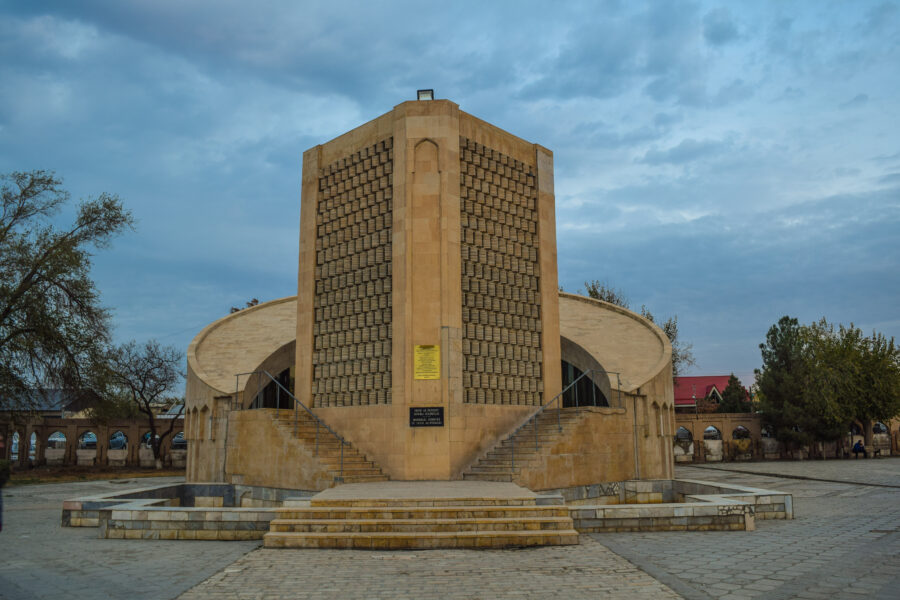
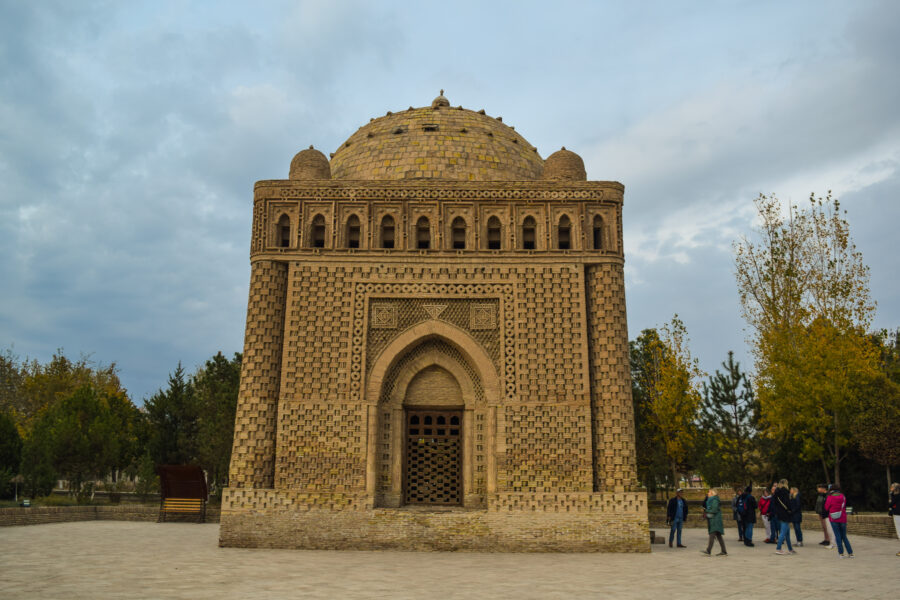
Don’t forget the Chor Minar
This former Madrasa, and now a small museum is at some distance from the old town. Built in the 12th century during the Karakhanid dynasty, Chor Minar translates to “Four Minarets,” and would remind you of Char Minar of Hyderabad. It is adorned with four tall towers, each uniquely designed with intricate brickwork and geometric patterns.
The Ulug’bek Madrasa
First, who’s Ulugbek? You will come across his name at multiple points in Uzbekistan. Ulug’bek was among the most brilliant minds of the 14th century. He excelled as an astronomer, mathematician, scientist, poet, and historian. The observatory he built in Samarkand gave insight into the precise measurements of the earth’s axis and the astronomical year. Ulug’bek’s meticulous calculations determined the length of a year to be 365 days, 6 hours, 10 minutes, and 8 seconds, with an error rate of only 58 seconds! This was way before Galileo had put forth his theories on Earth’s revolution.
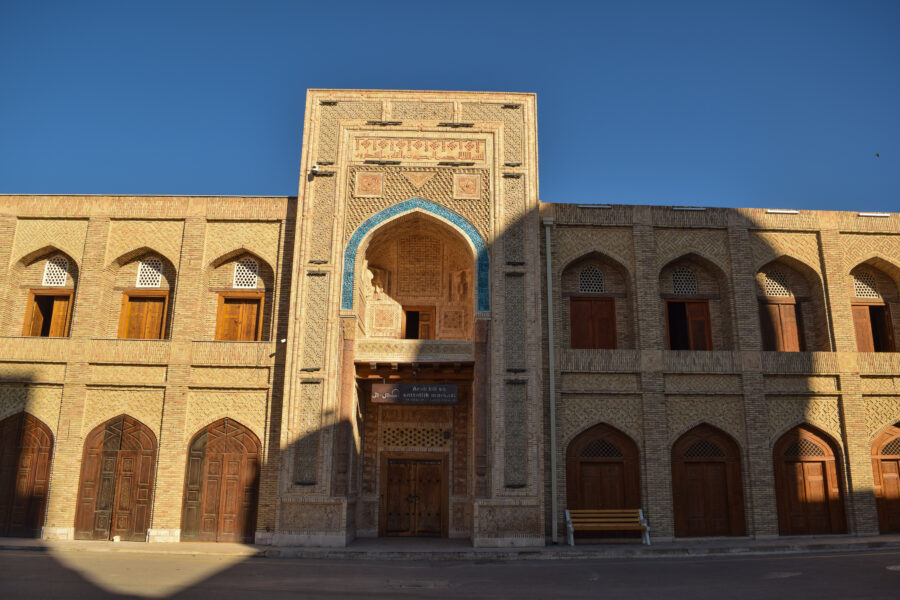
Ulug’bek was passionate about education – and established exquisite madrassahs in Bukhara and Samarkand to educate and enlighten people. The Madrasa was closed when I visited. It seemed quite old and in need of some restoration. Right across, was the Abdulaziz Khan Madrasa. That one has a distinctive exterior, unique design, and vibrant facade colors.
Ahh! Shop the best Uzbeki souvenirs
If there is one city you need to pick to shop for some Uzbeki souvenirs, it must be Bukhara. Since a lot of art products that you will see in Samarkand or Tashkent, are from Bukhara – why not then buy those at the source city? I had only one day to explore Bukhara, so I couldn’t pencil in much time to go shopping. But if you are serious about shopping the authentic Uzbeki art – keep some time aside to explore the various markets of Bukhara.
There are other stops in Bukhara, which sadly I couldn’t visit due to paucity of time. You may venture about 10km out of the center to visit the Mausoleum of Bakhauddin Naqshbandi. He was Bukhara’s unofficial patron saint and his Mausoleum is the holiest site in the region. Not far from there is Sitorai Mokhi Khosa, which was the summer palace of Bukhara’s emirs. This magnificent residence boasts extraordinary interiors adorned with mirrors, brightly painted walls, and ceilings that showcase intricate designs, and an array of fascinating furniture pieces.
Travel to Bukhara
By Train: Bukhara is well-connected by rail, especially from Tashkent, the capital city of Uzbekistan. The train journey from Tashkent to Bukhara takes around 7-8 hours, on a normal train. In Afrosiyab or high-speed train, it takes 5 hours. From Samarkand, it’s only 1.5 hours by Afrosiyab. Trains in Uzbekistan are comfortable and offer sleeper compartments for overnight journeys. Trains are also the best bet to travel within Uzbekistan.
By Road: The road network in Uzbekistan is well-developed. The bus journey, however, would be a little longer than the train. But it will also prove cheaper. The only issue is that bus timings are not well defined, and finding the bus could be a little tiresome, especially from Samarkand to Bukhara. You can hire a private taxi from Samarkand to Bukhara, which could cost you around $80.


